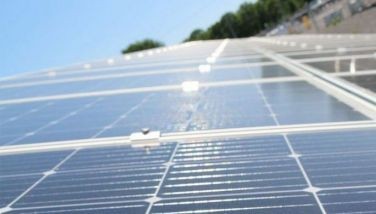GDP growth seen to slow below 1.1%

Worse than during global financial crisis in 2008
MANILA, Philippines — Analysts are not discounting the possibility that the Philippine economy will be worse off this year than during the global financial crisis in 2008.
In separate reports, bank economists said they expect the Philippines to book a slower gross domestic product (GDP) growth due to the impact of the novel coronavirus disease 2019 (COVID-19) outbreak.
UnionBank chief economist Ruben Carlo Asuncion said the economic slowdown is likely to be worse than the global financial crisis in 2008 that dragged the country’s GDP growth to 4.2 percent in 2008 and 1.1 percent in 2009.
“We’re still finalizing our scenarios, at this time. This situation is so fluid that current numbers become immediately not current the next day. I cannot give you a point estimate now, but be reminded that back in 2009, Philippine GDP settled at 1.1 percent. So, we may be seeing 2020 GDP lower than this,” Asuncion told The STAR.
He said pre-financial crisis economic growth was at 6.6 percent in 2007 and the country’s real economy eventually rebounded to 7.6 percent in 2010.
He said the Philippine economy in 2007 was t not the same as in 2019 as tourism has more than doubled in terms of GDP contribution while trade played a bigger part in the economy.
“An estimated deeper impact of the COVID-19 pandemic on the bigger real macroeconomy, compared to the economic losses caused by the global financial crisis, warrants wider and more encompassing policies,” Asuncion said.
In its latest Asia economic outlook, ANZ Research said it now expects the country’s GDP growth to ease to 1.2 percent this year from 5.9 percent last year, reflecting multiple headwinds that have emerged over the last month including the virus outbreak.
“The insulation from the early stages of the COVID-19 outbreak is now breaking down. Multiple headwinds have emerged,” ANZ said.
It said a significant slowdown in household spending which accounts for close to 85 percent of GDP is most formidable amid the enhanced community quarantine imposed in Luzon.
The National Economic and Development Authority (NEDA) had estimated that a five percent to 10 percent decline in discretionary household spending could potentially erase 0.2 to 0.5 percentage point of GDP.
“The problem now is that the lockdown will bring even non-discretionary spending under the hammer due to limited mobility and rising unemployment. The lockdown is feeding through to the informal sector which accounts for around 22 percent of employment, it is cutting into the muscle of the economy, posing a problem not even encountered during the global financial crisis,” ANZ said.
It expects inflation to ease to 1.9 percent this year from 2.5 percent last year amid the Bangko Sentral’s move to further slash interest rates by another 50 basis points.
The central bank has already cut benchmark rates by 75 basis points this year to boost market confidence and cushion the impact of the COVID-19 pandemic.
It also intends to lower the reserve requirement ratio by as much as 400 basis points this year, half of which would take effect on March 30, releasing P200 billion in additional liquidity to boost bank lending and economic activity.
“We are of the view that the spectrum of monetary policy will be widened to credit guarantees on lending to impacted sectors and greater regulatory forbearance on nonperforming assets. The availability of credit is becoming important than its price in our view,” ANZ said.
Meanwhile, IMF resident representative to the Philippine Yongzheng Yang said the agency is revising downwards the previous GDP growth forecast of 6.3 percent for the country as it is still assessing the impact of the COVID-19 pandemic.
“We will revise downward our existing growth forecast for 2020 and release the revised forecasts during the IMF/World Bank spring meetings next month,” Yang said in an e-mail to The STAR.
- Latest
- Trending
































